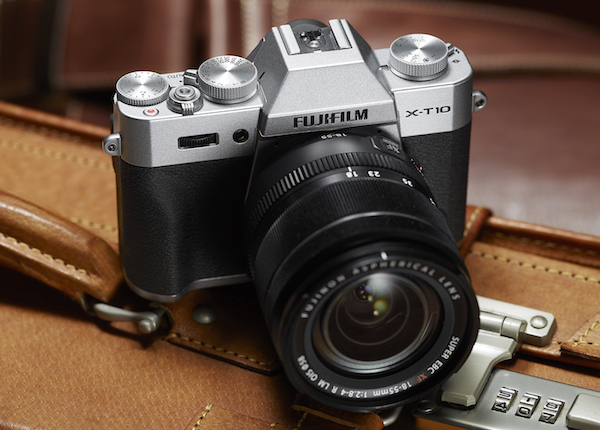Fujifilm X-T10 Camera Promises Better Action Shots
Mid-priced mirrorless camera designed for action with nearly instant startup and focus time and autofocus tracking for moving subjects.

Megapixels: Check. Color fidelity: Check. Exposure: Check. Today's cameras, from pro DSLRs down to the better smartphones, have aced most of the fundamentals of photography, except one — autofocus. Even the slowest camera is fine if your subject stops to pose for you. But if the person, animal, plane, train or automobile is moving, autofocus often breaks down, and blur results.
Fujifilm claims to have a fix for this problem with the X-T10 mirrorless camera ($800 body, $900 with 3X zoom lens), announced today (May 18) and going on sale in June. Like any respectable camera, the X-T10 uses the phase detection autofocus technology found on everything from DSLRs to flagship smartphones like the Samsung Galaxy S6 and iPhone 6 (Apple calls the tech "focus pixels"). But Fujifilm says it has gone one better with a zone system that tracks a subject as it moves across the frame.
The photographer can select a 3 x 3, 3 x 5 or 5 x 5 grid in the frame, and the camera will keep focus on a subject as it moves through those zones, using the 77 autofocus sensors on the 16.3-megapixel imaging chip. Based on what little Fujifilm has told us, this doesn't sound radically different from what a lot of DSLRs and higher-end mirrorless cameras do. The Sony a6000 (see review) and Samsung NX1 — two of the best mirrorless cameras out there for action photography — have far more autofocus sensors: 179 phase-detection points for the Sony and 205 for the Samsung. Canon's DSLRs with its dual-pixel sensors, such as the 70D (see review), have millions of AF points.
But it's not just about numbers. Fujifilm's X-T1 (see review) and X-E2 cameras both had zippy autofocus in our tests. It seems a safe bet that the X-T10 will be at least as good, and likely better. At least as impressive is Fujifilm's claim of a 5-millisecond lag time from when you press the shutter to when it takes a shot — including autofocus. Given that, the 8 fps shooting speed is not spectacular. Sony's a6000 hits 11 fps, and Samsung's NX1 (see review) tops out at 15 fps; but it's faster than most DSLRs, certainly ones at this price. The last stunning stat is a top shutter speed of 1/32,000 second (nearly fast enough to stop a bullet), using what's know as an electronic shutter — a designated light-sampling period on the sensor rather than a physical shutter that opens and closes.
MORE: Best Mirrorless Camera for Every Photographer
Classic Fujifilm Styling
Beyond the new Autofocus, the X-T10 looks like a typical member of Fujifilm's X line of cameras, and that's not bad at all. It features a retro-camera design with magnesium plates on the top and bottom and a black faux-leather finish in between. The camera includes an OLED electronic viewfinder, that, if like Fujifilm's others, should provide a good-as-optical viewfinder look. The camera also has a 3-inch tilting LCD screen on the back. Fujifilm only gives the resolution of its screens in an obscure measure known as "dots." But based on those numbers, it looks as if the viewfinder has a resolution of about 1024 x 768 pixels and the rear screen of 640 x 480 — both respectable specs.
The X-T10 shoots 1080p video at up to 60fps (as well as 30 and 24fps), which is a minimum requirement these days. No 4K for this camera. Video quality has been Fujifilm's one serious weak point in the past. It will be interesting to see how the camera maker does this time around. We'll be testing all the camera's features as soon as we can get our hands on one.
Get instant access to breaking news, the hottest reviews, great deals and helpful tips.
- Why Autofocus Is the New Megapixel
- How to Take Great Photos with a DSLR or Mirrorless Camera
- These are the Best DSLRs You Can Get
Follow senior editor Sean Captain @seancaptain. Follow us@tomsguide, on Facebook and on Google+.
Sean Captain is a freelance technology and science writer, editor and photographer. At Tom's Guide, he has reviewed cameras, including most of Sony's Alpha A6000-series mirrorless cameras, as well as other photography-related content. He has also written for Fast Company, The New York Times, The Wall Street Journal, and Wired.
